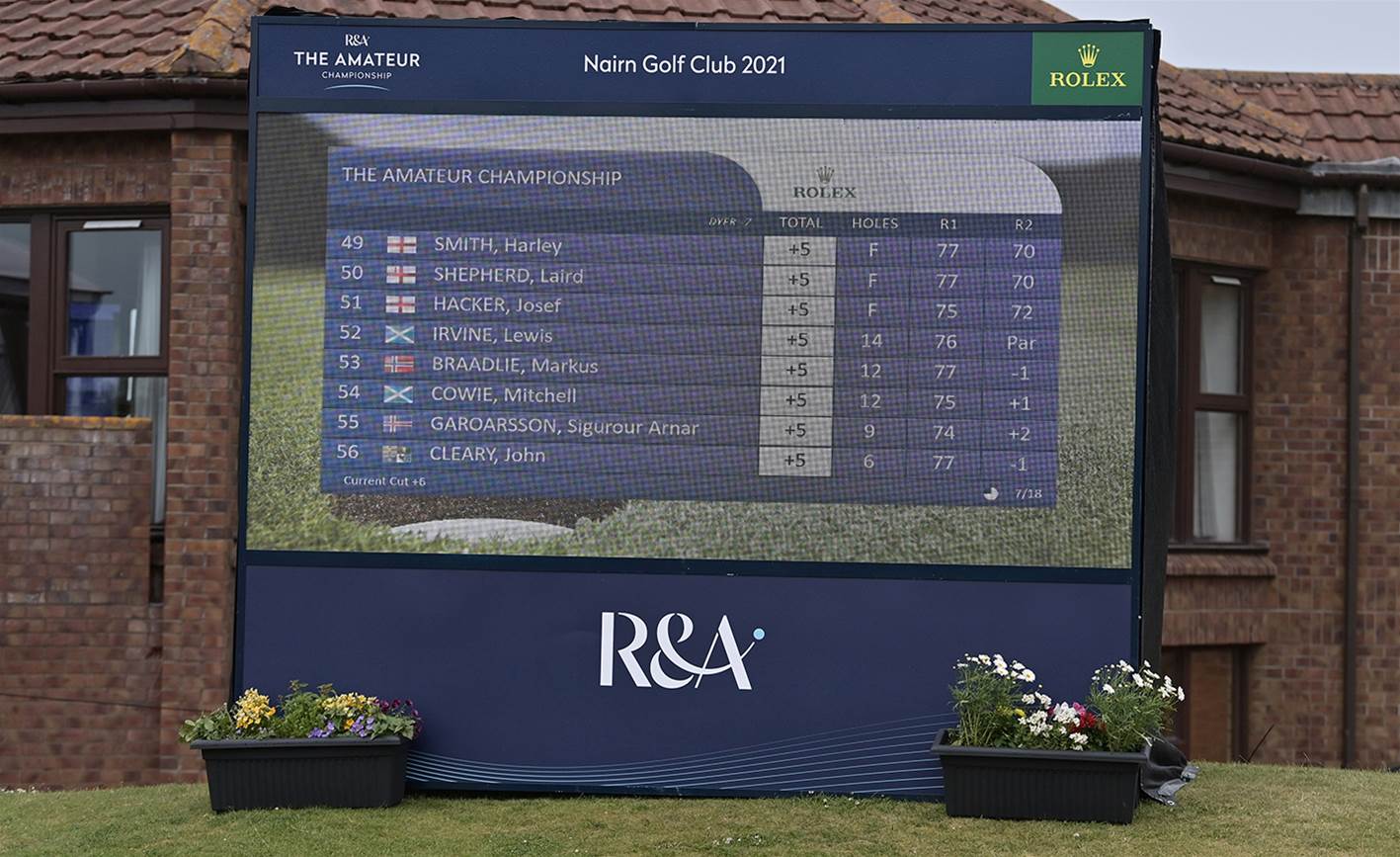Not every golfing eye is on Torrey Pines and the US Open this week – 5,100 miles from San Diego, another major championship is taking place.
For the second time in its 136-year history, the (British) Amateur Championship is being played over the links at Nairn, on the shores of the Moray Firth in the endlessly picturesque Scottish Highlands.
As has become the norm in these interminable Covid-19 times, the championship – one won by the likes of Bobby Jones, Frank Stranahan, Doug Bachli, Michael Bonallack, Jose Maria Olazabal, Jay Sigel, Sergio Garcia, Vinny Giles, Joe Carr and Matteo Manassero – isn’t following its usual trajectory this year. For one thing, the usual 288-man starting line-up was cut in half. And for another, a ‘card count-back’ rather than the traditional preliminary round was used to break what turned out to be a 16-way tie for 58th place and determine the last seven of the 64 qualifiers for match-play.
Wait. Hang on a minute. Let’s take another look at the last sentence in the previous paragraph.
A ‘card count-back’ – a system more commonly employed in monthly medals at clubs across many lands – in a national championship? Surely that can’t be true.
Sadly, it is.
Yes, this blatant affront to the true spirit of high-level competition actually happened earlier this week. So it was that, when those 16 players tied on six-over par after 36-holes of stroke-play, seven were ushered into the knock-out stages because they hit more shots on the front-nine at Nairn than did the unlucky nine.
In other words, what could and should have been a display of competitive golf at its entertaining best degenerated into a pathetic parody of that ideal.
You read that correctly. Because they stood on the 10th tee with a “lead,” the non-qualifiers were deemed inferior to men who eventually shot the same score. (I’m pausing now to shake my head, by the way). What should have been sacrosanct - the necessary integrity and purity of true competition - was sacrificed for reasons that, even in these unprecedented times, fail to survive close scrutiny.
“Due to the impact of the Covid pandemic and the restrictions in place when we set the terms of competition, we had to make some adjustments to the format of the Amateur Championship,” says an R&A spokesman. “This included reducing the field from 288 to 144 and playing on one course instead of the normal two for qualifying.
“We were required to provide as much certainty as we could to the public health authorities regarding numbers of players, family and others who would be travelling to the championship and staying locally. With a reduced starting field, we took the decision to move to 64 qualifiers outright rather than the normal 64 and ties to reduce the potential variability in numbers from that perspective. This was a decision taken due to the exceptional circumstances and we hope to be able to return to the normal starting field and format for the championship next year.”
Which is all very well. But the weakness of this argument is obvious. The “certainty” sought by the R&A – a 64-strong field (and no more) in place on the third morning – would almost certainly have been unaffected by the installation of a play-off. Which would surely have been a more logical solution, way more than a nonsensical system that penalised those who happened to perform best over what some faceless administrator determined were the “wrong” holes.
In other words, what could and should have been a display of competitive golf at its entertaining best degenerated into a pathetic parody of that ideal. In an event important enough to offer the winner an exemption into the Open Championship and, by tradition, an invitation to the Masters at Augusta National, comparing cards to get a “result” simply isn’t good enough.

Besides, it would not have been difficult to introduce a sudden-death play-off, what would surely have been the fairest and most convenient way to determine the winners and losers. Lack of daylight is not an issue. Mid-June days in the north of Scotland typically comprise maybe 21 hours of daylight and three hours of greyness that hardly qualifies as darkness. Play could have continued until not far short of 11pm, or even, with clear skies, a little later. And in the unlikely event that the play-off did extend into the following morning, getting back on schedule by that evening would have been a long way short of onerous.
Clearly, none of the above should have been beyond the ken of the R&A. But, instead of fairness, they came up with farce. Vying with their pointless installation of pointless phrases like “penalty area” and “hole location” into golf’s peerless lexicon, this shameful episode is a long way from the rules-making body’s finest hour. I mean really.
Related Articles

Aussie golfers eye Masters spot at Amateur Championship

The Thing About Golf: #141 Andrew Coltart













